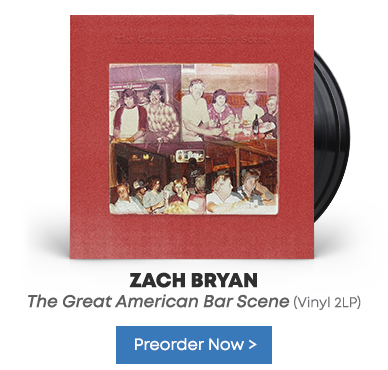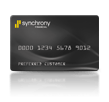A live album often captures what can't always be documented in a recording studio – energy, tension, charisma, spontaneity, audience interaction, and more. It also offers listeners the ability to revisit a singular moment in time as opposed to a more carefully created, polished product. Music Direct presents 10 of the best live albums out there, nearly all of which are available on LP. Check out their stories below and be sure to let us know which live platters are your favorites.
The Allman Brothers Band At Fillmore East
This record proved one of the best career moves for the Allman Brothers Band and brought the collective success in more ways than one. The live recording of the group's two-night stand at Fillmore East not only resulted in commercial success, but allowed listeners to see a different side of the band than previously heard on its studio albums. As a result, At Fillmore East can be credited for significantly expanding the band's fan base. Best demonstrated by whopping 23-minute "Whipping Post," the ensemble's jam roots take center stage. Years later when it came time for the venue to close its doors for good, it only seemed fitting the Allman Brothers Band headlined the farewell.
The Band The Last Waltz
The Last Waltz captures exactly what a live album should: Magic that can't be created or felt from a studio recording. This record stems from the concert of the same name – and doubles as the soundtrack for the film of the same name – staged to commemorate the iconic rock group's farewell performance. The show took place on Thanksgiving 1976 and features an impressive lineup of guests, including Bob Dylan, Neil Young, Eric Clapton and many more. Originally released as a triple LP, it has since been re-released on several expanded versions as well as a definitive-sounding Mobile Fidelity SACD box set.
Johnny Cash At Folsom Prison
This record, and the big-picture context of what it meant, remains relevant to this day. After Johnny Cash had watched the documentary Inside the Walls of Folsom Prison, he was inspired to write his hit "Folsom Prison Blues." The song naturally resonated with inmates at Folsom Prison as well as with the habitants at other prisons, too, and Cash started to receive letters from inmates requesting he perform for them. So he did, several times. While this particular prison performance wasn't his first, it has become his most iconic. The album also stands as one of the Man in Black's best-selling releases, exceeding three million copies in sales.
Peter Frampton Frampton Comes Alive!
The release of Frampton Comes Alive! can be perceived as a Hail Mary of sorts, a final effort to resonate with consumers. Which it did. Following four records that failed to perform well on the charts or net financial returns, Frampton needed to strike gold. He hit platinum instead. As the beginning of the decade saw the arrival of The Who's acclaimed Live at Leeds and the release of the triple-disc Woodstock soundtrack, Frampton didn't shy away from following suit. This record is not only one of the top-selling live albums in the U.S., but also reached No. 1 on the Billboard 200, selling more than eight-million copies along the way.
Grateful Dead Live/Dead
It's hard to capture the essence of a jam-oriented band through a studio recording, or any recording for that matter, as the true magic occurs when no creative agenda or restraints on time apply. That being said, the aforementioned allure of what happens live is bottled up on Live/Dead and pours out as soon as the needle drops. This release was the band's first live record and includes "the finest rock improvisation ever recorded," according to critic Robert Christgau. While the double-LP set didn't chart or sell in high volumes, it marks the iconic band's first documented step towards its legacy as one of rock's greatest live bands – a title that still holds true to this day.
Bob Marley and the Wailers Live!
Some of the best things are never planned, a notion evidenced by this record. Bob Marley and the Wailers never intended to record any shows during their 1975 Natty Dread tour, and technically, they never really did. Rather, when Island Records founder Chris Blackwell watched the ensemble perform their first of two shows at London's Lyceum, he knew the second show had to be captured and preserved. The following night, he returned with the Rolling Stones' now-famous mobile studio to record the concert. The extended live version of "No Woman, No Cry" has since become the most widely known version of the beloved tune.
Nirvana MTV Unplugged in New York
The hype, emotion, and acclaim surrounding this live album are undeniable – primarily due to the fact it marked Nirvana's first release following the death of Kurt Cobain. Unlike most acts that performed hit-based sets for the Unplugged series, Nirvana crafted a compilation of covers – such as David Bowie's "The Man Who Sold The World," among others – and lesser-known tracks for the live taping. The album went on to win the band a Grammy Award for Best Alternative Music Album in 1996 and it climbed to No. 1 on the Billboard 200, where it remained on the charts for 81 weeks.
Simon and Garfunkel The Concert in Central Park
This set not only stands as the folk duo's first live album from the folk duo, but the first release since their split. Paul Simon and Art Garfunkel were billed as separate performers for the event, and their reunion tours that followed were short-lived affairs. True to its name, The Concert in Central Park chronicles the free benefit concert the tandem held in New York's iconic Central Park. It includes fan favorites from the artists as a duo and as individual performers (the tally is unbalanced, with eight belonging to Simon and just one to Garfunkel, the appropriately selected "A Heart in New York"), as well as an Everly Brothers cover. While 300,00 were expected to attend, an estimated 500,000 people showed up to witness the momentous occasion.
Muddy Waters At Newport
While this record may lack tangible evidence as to its commercial popularity – it never charted or broke any sales records – it nonetheless signifies something larger than numerical success. Muddy Waters' performance at the Newport Jazz Festival in 1960 confirmed the blues' ability to crossover to the mainstream, with Waters' electric blues band appealing to a wider demographic of listeners. The performance is made even more memorable by the addition of jazz poet Langston Hughes, who jumped on stage to read the impromptu lyric, "Goodbye Newport Blues," resulting in a spontaneous performance of the poem that served as the set's closing number.
The Who Live at Leeds
Aside from being the Who's first live album, this record is also the band's only live release to feature its classic, original lineup of Roger Daltrey, Pete Townshend, John Entwistle, and Keith Moon. Following the success of 1969's Tommy, the band had plans to compile a live album. But Townshend soon grew tired of having to pick and choose among various versions of songs, and – as legend has it – ordered the tapes to be burnt. Instead, the Who scheduled two shows, one at University of Leeds and another in Hull. The group would then choose songs from these shows for the release. But the Hull show had technical difficulties, leaving the band no choice but to release the Leeds show in its entirety. Fortunately, the show witnessed the band in peak form and the rest is history. Live at Leeds has since been certified multi-platinum and regarded in near-unanimous fashion as one of the ten-best live records ever made.
14th Sep 2016




































